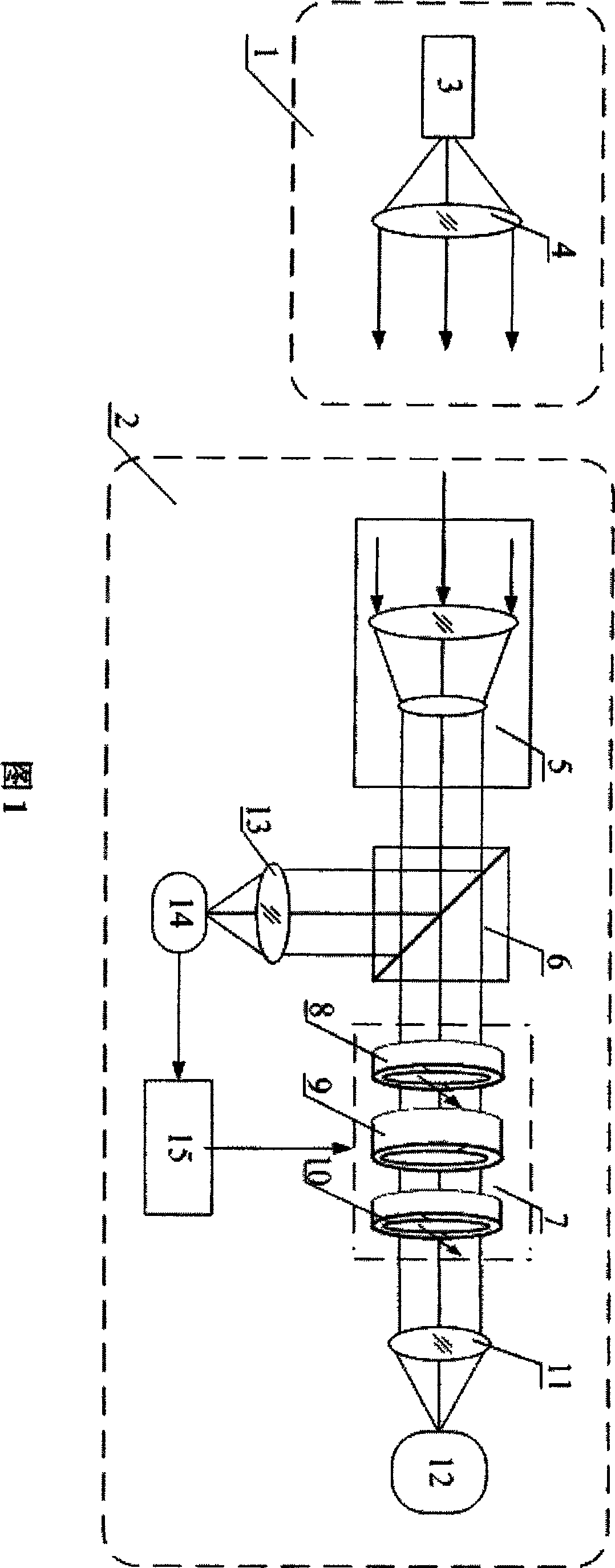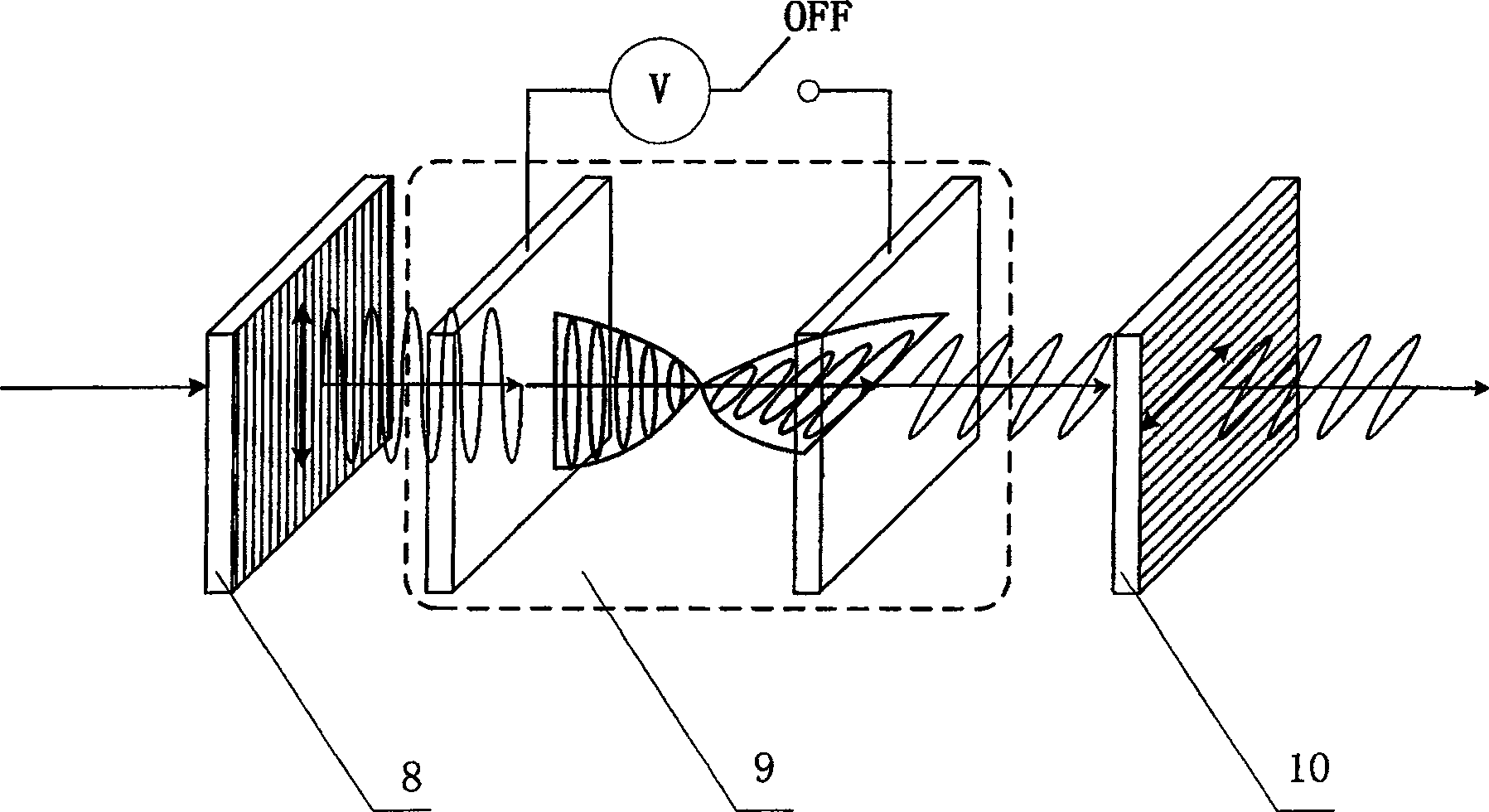Light intensity self-adaptive control system based on LCD for atmospheric laser communication system
A technology of atmospheric laser communication and adaptive control, applied in optics, optical components, nonlinear optics, etc., can solve problems such as the inability to guarantee the dynamic range of the system, the fragmentation of the spot, and the inability to guarantee the quality and accuracy of the laser spot at the receiving end.
- Summary
- Abstract
- Description
- Claims
- Application Information
AI Technical Summary
Problems solved by technology
Method used
Image
Examples
Embodiment 1
[0012] As shown in FIG. 1 , the liquid crystal-based light intensity adaptive control system in the atmospheric laser communication system of the present invention consists of two parts: a signal transmitting unit 1 and a signal receiving unit 2 . The signal transmitting unit 1 is composed of a coaxially arranged laser 3 and a transmitting optical system 4 . The laser 3 is a semiconductor laser with a laser wavelength of 750nm-850nm. The laser light emitted from the laser 3 passes through the emitting optical system 4 and becomes parallel light before being emitted. The signal receiving unit 2 has a beam reducer 5 arranged coaxially, a dichroic prism 6, a liquid crystal adjustable beam attenuator 7, a receiving optical system 11 and a CCD detector 12, and a receiving optical link with the dichroic prism 6. The optical system 13 , the photodetector 14 and the adaptive controller 15 are electrically connected, and the electrical modulation signal is applied to the liquid crysta...
PUM
 Login to View More
Login to View More Abstract
Description
Claims
Application Information
 Login to View More
Login to View More - Generate Ideas
- Intellectual Property
- Life Sciences
- Materials
- Tech Scout
- Unparalleled Data Quality
- Higher Quality Content
- 60% Fewer Hallucinations
Browse by: Latest US Patents, China's latest patents, Technical Efficacy Thesaurus, Application Domain, Technology Topic, Popular Technical Reports.
© 2025 PatSnap. All rights reserved.Legal|Privacy policy|Modern Slavery Act Transparency Statement|Sitemap|About US| Contact US: help@patsnap.com



